Beyond the Blue: Papahānaumokuākea ROV and Mapping
(EX2503)
Mission to USS Yorktown: Dive Highlights
On April 19 and 20, 2025, as part of the Papahānaumokuākea ROV and Mapping expedition on NOAA Ship Okeanos Explorer, NOAA Ocean Exploration and partners explored the final resting site of USS Yorktown (CV-5). This U.S. Navy aircraft carrier took part in several World War II operations before being sunk by a Japanese submarine following the Battle of Midway. These non-disturbance dives were the first to explore the ship’s hangar deck, revealing a number of unexpected discoveries, described below.
On April 19 and 20, 2025, NOAA Ocean Exploration and partners explored the final resting place of USS Yorktown, a U.S. Navy aircraft carrier lost in the Battle of Midway. The dives revealed several significant discoveries. Download largest version (mp4, 235 MB)
It is important to note that the 2025 remotely operated vehicle (ROV) dives were not the first to explore the shipwreck. Several investigations of Yorktown have occurred since its 1998 discovery and initial documentation by Dr. Robert Ballard, the National Geographic Society and the U.S. Navy, including a characterization mission in 2023 led by Ocean Exploration Trust on Exploration Vessel Nautilus. The dives in 2025 built on this previous work, providing answers to existing questions and resulting in new mysteries for historians and scientists to puzzle out.
Mural: "A Chart of the Cruises of the USS Yorktown"
During the dive on April 19, for the first time ever, we were able to image the mural, “A Chart of the Cruises of the USS Yorktown,” hand-painted inside the ship’s #2 elevator shaft. This mural had only partially been visible in historic photographs of other subjects when Yorktown was afloat. The mural displays a world map that tracks the voyages of Yorktown. Measuring approximately 42 feet by 12 feet, its motifs showcase the pride that Yorktown's sailors had for their ship, the global scale of Yorktown’s activities, and the strategic role that the ship played in defending the United States.
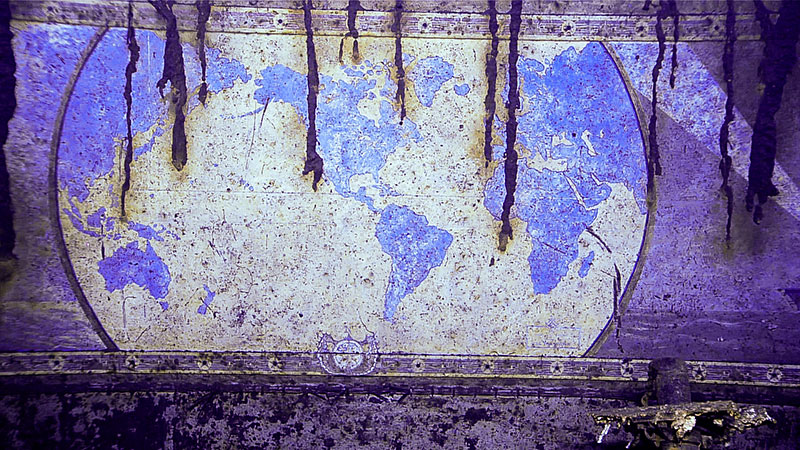
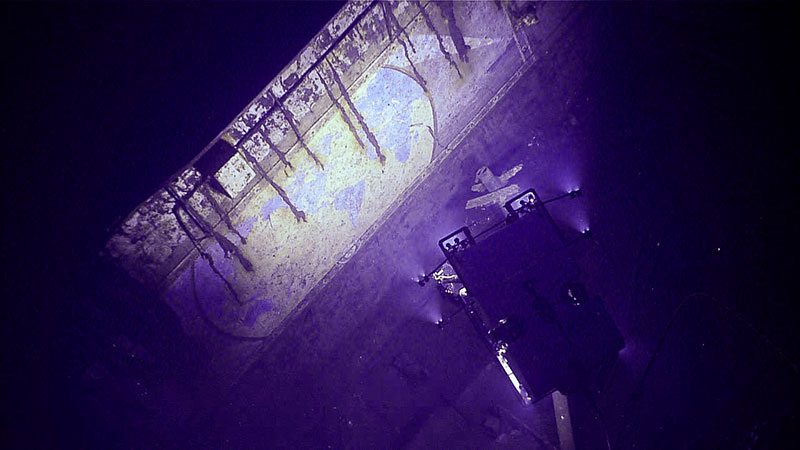



A Surprise Automobile
Exploration often provides some surprises. During the dive on April 19, we noticed a faint outline of an automobile while peering into the aft hangar deck from the port side of USS Yorktown. The team aboard Okeanos Explorer and contributors ashore analyzed diagnostic features of the vehicle observed during the follow-up April 20 dive and tentatively identified the car as a 1940-41 Ford Super Deluxe ‘Woody’ in black. With “SHIP SERVICE ___ NAVY” written on part of its front plate, this car is hypothesized to have been used for Rear Admiral Frank Jack Fletcher, Captain Elliott Buckmaster, or other ship crew while USS Yorktown was conducting business in foreign ports.
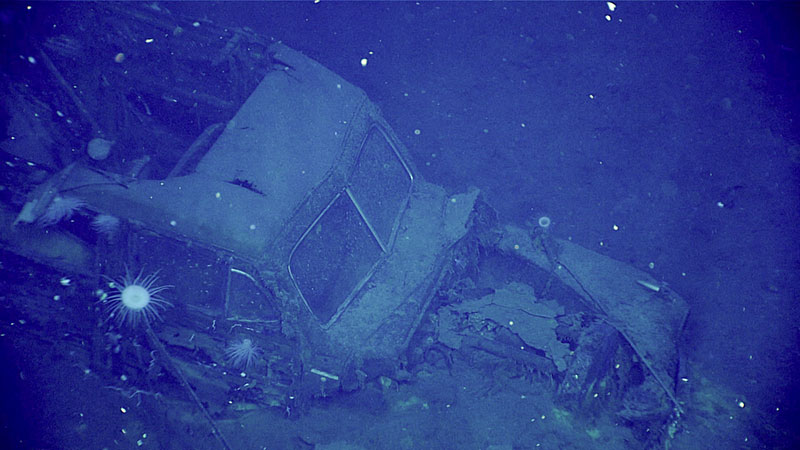
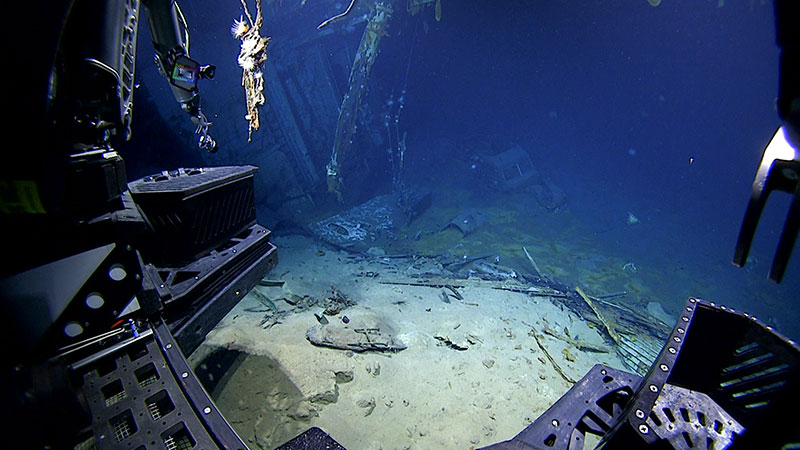
Why, though, did the car remain stowed in the hangar deck after a brief 48-hour repair period in Pearl Harbor, when the ship’s officers knew it was heading to the Battle of Midway? During the valiant efforts to right Yorktown’s list, why too wasn’t this car jettisoned like the anti-aircraft guns and the aircraft? Did this automobile carry any particular importance to crew and officers who hoped it could be saved?


Douglas SBD Dauntless Dive Bombers
The dives resulted in the first-ever underwater discovery of aircraft on the Midway battlefield, a seminal clash between sea and air power. Previous exploration at Midway investigated ships engaged in the battle; however, the dive on April 20 resulted in the extraordinary discovery of aircraft that fought at Midway lying underwater, on the actual battlefield.
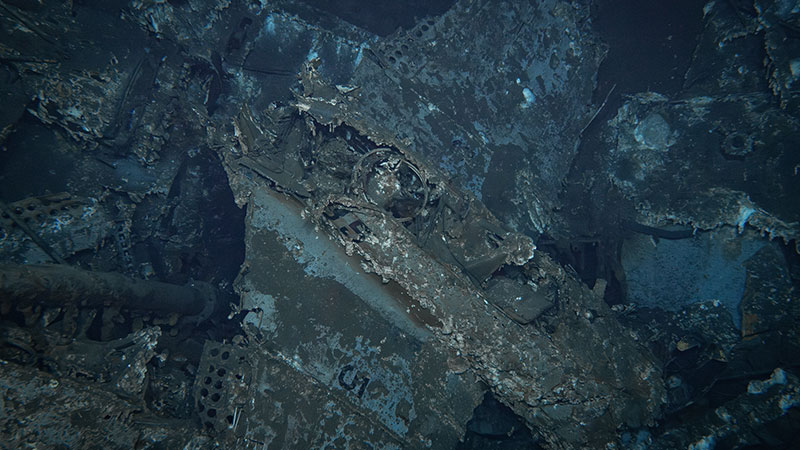

With the incredibly skilled and experienced pilots from the Global Foundation for Ocean Exploration, ROV Deep Discoverer observed Yorktown’s hangar deck by means of the #3 elevator shaft. Deftly avoiding a number of entanglement hazards, ROV cameras soon revealed the jumbled wreckage of at least three Douglas SBD Dauntless dive bombers resting in the aft starboard quarter. One of the planes, likely part of Yorktown’s reserve force on the first morning of the battle, was seen fully armed, lying inverted with a bomb still secured in the release cradle. Another plane, with the figures “B5” boldly legible on its fuselage, is currently believed to be BuNo 4581, an SBD-3 assigned to Bombing Squadron Six from USS Enterprise (CV-6). Records show that in the chaos of battle, Yorktown recovered two Enterprise aircraft that had been badly damaged in an attack on the Imperial Japanese Navy carrier Kaga. These refugee aircraft were moved down to the hangar deck and later set afire by one of three enemy bombs that struck Yorktown. Research is ongoing to determine definitively if 6-B-5 was indeed one of the two Enterprise dive bombers lost with her sister ship. Research provided by Russ Matthews, Air/Sea Heritage Foundation.
The team was also able to confirm that an aircraft wing was imaged forward of the #2 elevator during the 2023 expedition on E/V Nautilus. They also located another pair (or potentially folded set) of wings in the hangar deck; these wings likely were spares.

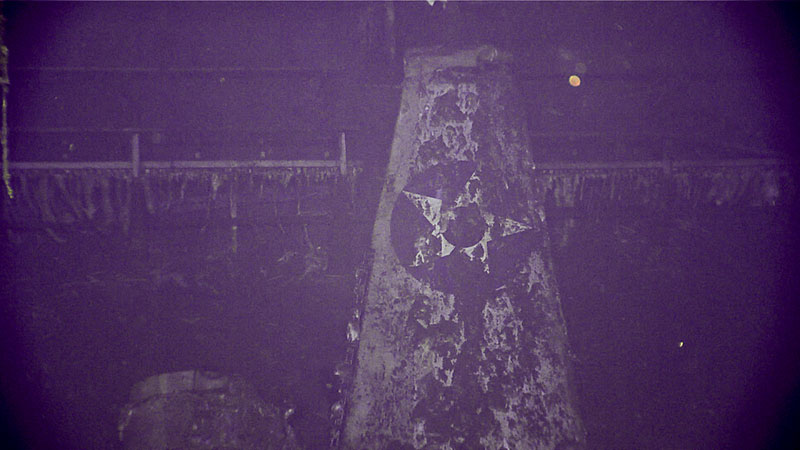
Shipwreck Biology
In addition to being an historic time capsule, the wreck of USS Yorktown provides habitat for a variety of marine life. Observations of this life made throughout the ROV dives on April 19 and 20 are important in helping us better understand how the deep-ocean environment changes over time. A few of the animals encountered during the dives are shown below.
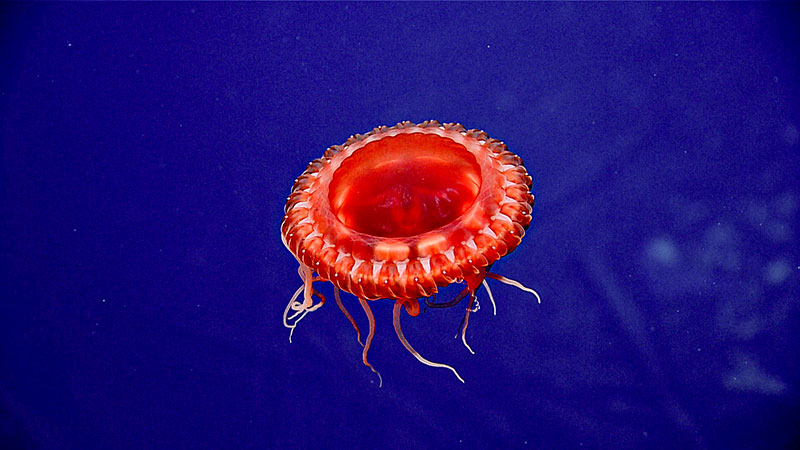

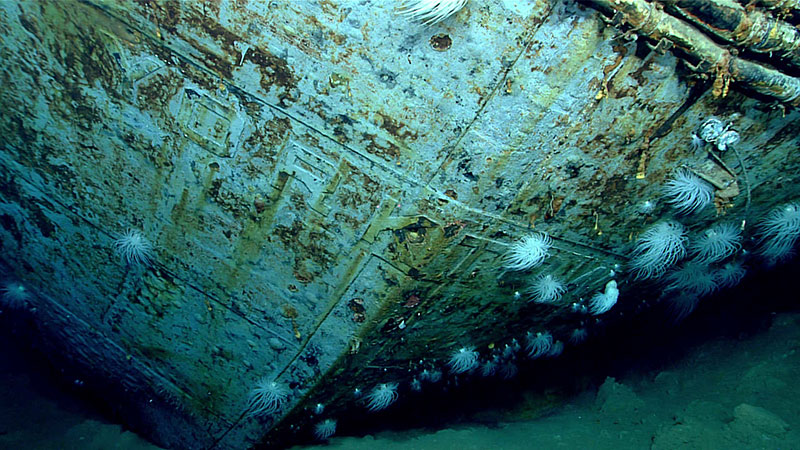
This mission was only possible through the contributions of partners including the Global Foundation for Ocean Exploration, NOAA Office of Marine and Aircraft Operations, NOAA Office of National Marine Sanctuaries, the Naval History and Heritage Command, SEARCH, Air/Sea Heritage Foundation, the Defense POW/MIA Accounting Agency, Nauticos, Ocean Networks Canada, Ocean Exploration Trust, Chuck Haberlein, Jonathan Parshall, and Anthony Tully.
The wreck of USS Yorktown is a protected sunken military craft managed by the Naval History and Heritage Command, and, most importantly, serves as the final resting place for hundreds of servicemen that gave their lives in defense of the nation. In recognition of the importance of the Battle of Midway to the United States as well as the incredible state of preservation, in 2023, the United States Navy designated the wreck of USS Yorktown (CV-5) as a Site of Extraordinary Character.

For More Information
- Exploring USS Yorktown
- NOAA Ocean Exploration Photogrammetry Collection
- Exploring Iconic Shipwrecks from Battle of Midway to Provide Never-Before-Seen Details
- Battle of Midway Oral Histories
Updated April 24, 2025
Published April 22, 2025